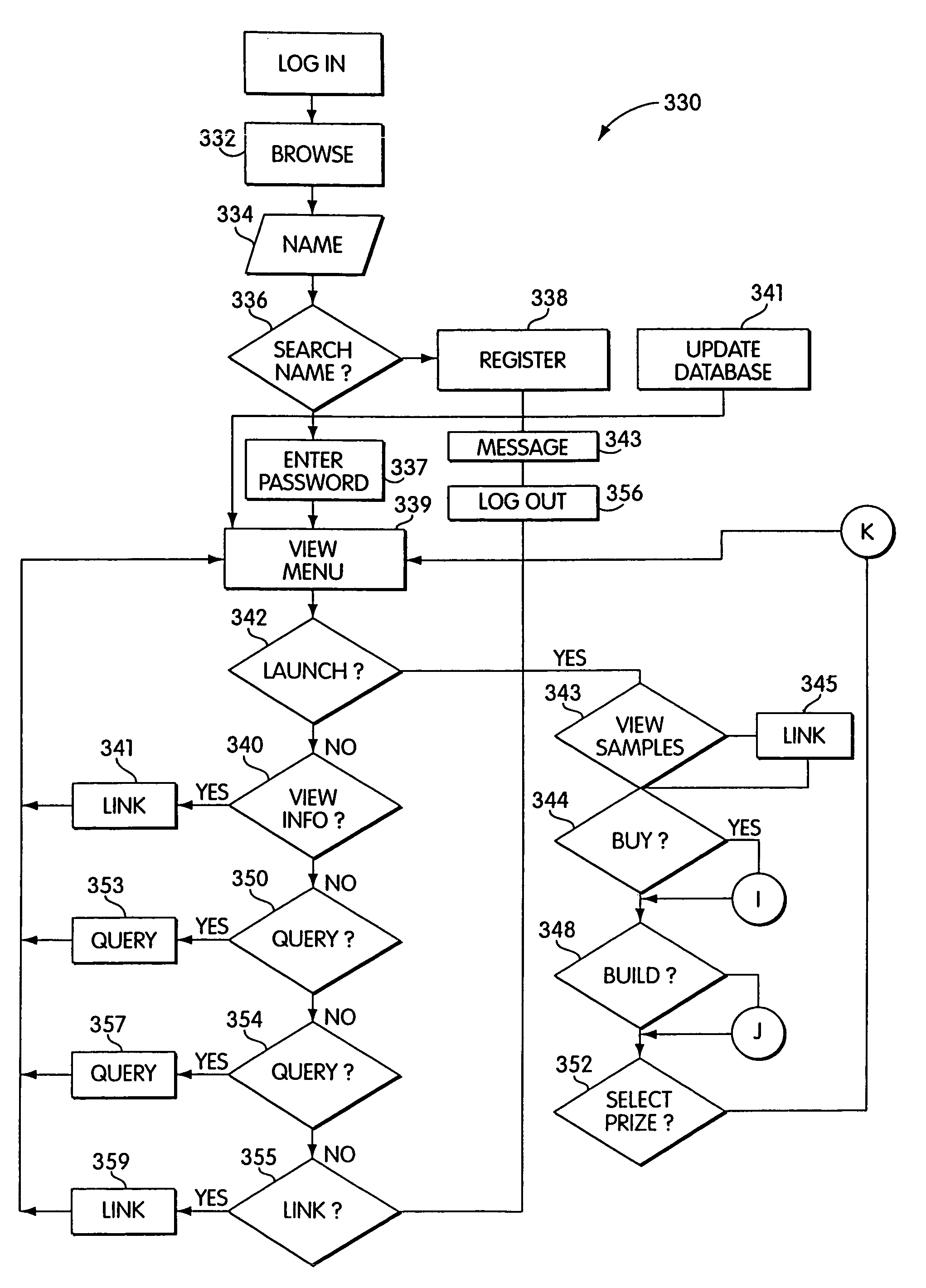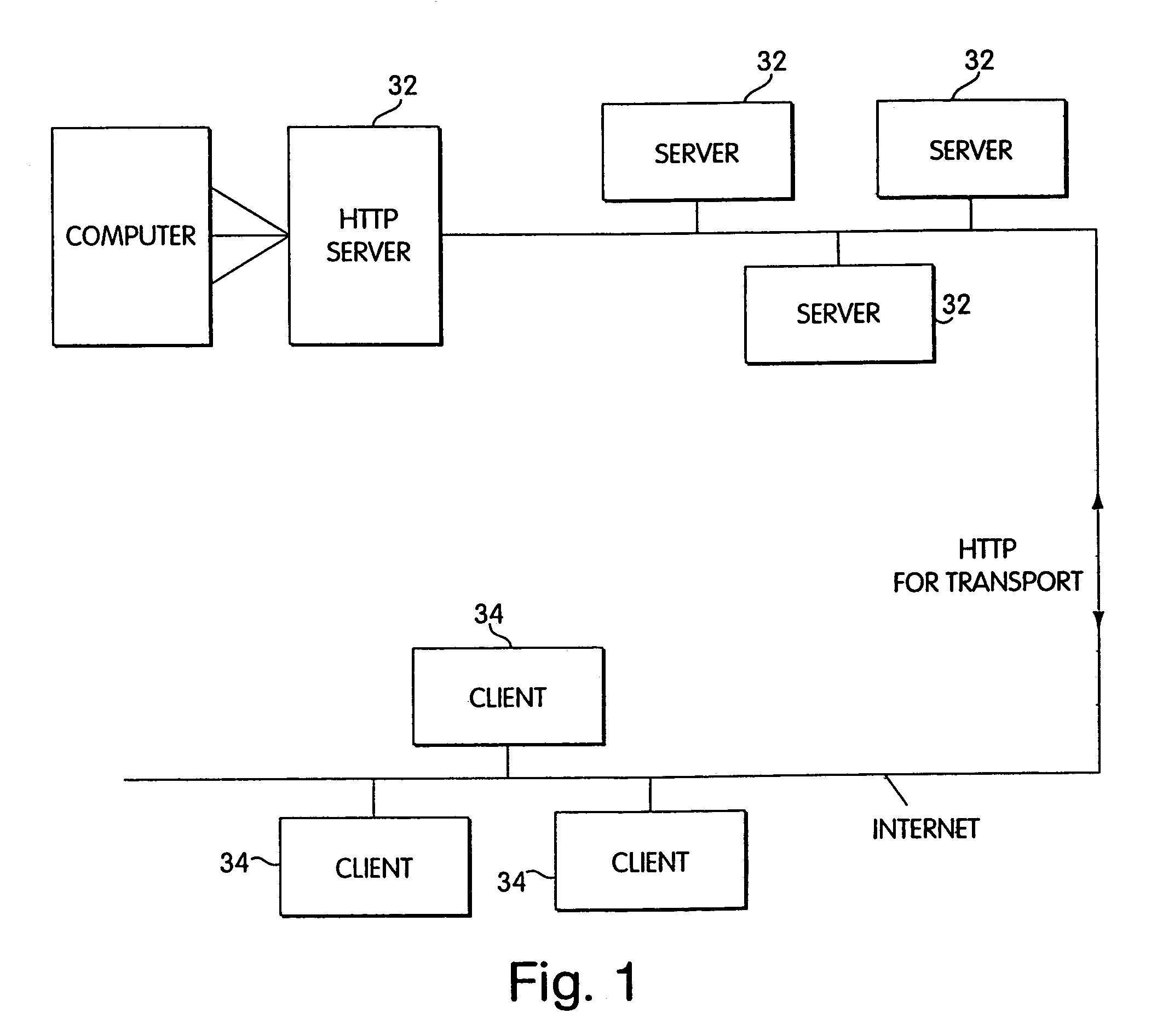Traditional incentive programs systems suffer drawbacks in terms of convenience of
tracking data, changing promotions, and the like.
For example, for a
consumer who participates in multiple incentive programs it may take time and effort to track his or her participation in each program.
Therefore, when a
consumer receives an offer to participate in an incentive program, the
consumer may decide against participating in it, not because the incentive program is not attractive, but because the cost to the consumer, in terms of the time and effort to tracking another incentive program, exceeds the expected benefit of the incentive program.
A similar problem exists for sponsoring companies who wish to offer promotions.
The collective costs of generating incentive programs, administering the incentive programs, tracking the participation of consumers in the incentive programs and fulfilling the awards or prizes won in such incentive programs may exceed the benefits of offering the incentive program.
These costs may be particularly high in instances where the activities associated with an incentive program must be carried out by different companies, or by different organizations within the same company.
Existing incentive programs do not meet all of the consumer and sponsor needs associated with incentive programs.
The
processing of promotions, i.e., providing the appropriate check or discount coupon to the customer as a reward for the initial purchase, involves high volume and labor intensive activity, including collection,
verification and organization of initial proofs of purchase and related information, preparation of the checks, coupons or other items using preprinted stock provided by the sponsor in connection with the particular promotion, and finally the sorting of individual items based on their mailing destinations.
This increases handling expense, not only in added labor, but also in the mailing cost, as it is difficult with a single promotion to accumulate a volume of items sufficient to qualify for certain reduced postage rates, e.g. the reduced rate available for mail presorted by
zip code of the destination.
Manual recombination and sorting of items for multiple promotions would be prohibitively expensive.
Many problems exist with the coupon distribution and redemption
system.
Thus, consumer reluctance to take all necessary steps partially defeats the manufacturer's purpose for offering the purchase incentive.
However, when the coupon is forgotten or disregarded, the consumer is usually not aware of the incentive when he is selecting a product among different brands at the retail store.
Another problem with coupon redemption systems is
verification.
Because the
verification of redemption conditions is performed by a check-out clerk, a consumer can in some instances present so many coupons that it is impractical to verify the required purchases for all of them.
However, existing incentive programs do not solve all consumer and sponsor needs.
In particular, such promotional games do not assist consumers in tracking participation in multiple promotions and do not assist sponsors in generating incentive programs, tracking participation in incentive programs and fulfilling awards and prizes.
The card-based
system of Schultz takes
advantage of certain
data processing capabilities of computer systems and certain data storage capabilities of electronic card technologies; however, among other drawbacks, the system of Schultz does not address the need for a system that assists sponsor companies in generating incentive programs, in tracking participation of consumers in multiple incentive programs, or in fulfilling awards.
Such systems have requirements peculiar to their respective industries, and none of the existing systems address all of the problems inherent in known incentive programs, particularly the problem of the need for an incentive program system that conveniently tracks participation while offering automated generation of incentive programs and automated fulfillment of awards won in incentive programs.
Computer incentive programs are offered on
the Internet; however, such systems are generally offered by a single sponsor and are generally limited to offering consumers the ability to participate in incentive programs.
Known systems do not offer sponsors the ability to conveniently generate incentive programs, to track participation of consumers in multiple incentive programs, or to provide for automated fulfillment of awards.
Another important drawback of known computer incentive program systems is that the obligation to fulfill the awards promised in a promotional campaign is often a logistically difficult and expensive task.
Among other things, Burton et al. offers no
advantage to a company sponsoring an incentive program in terms of the investment of skill and labor in developing an incentive program.
Further, the complex letter of credit scheme of Burton et al. is likely to require participation of other entities, such as banks and attorneys in order for it to operate properly.
Also, Burton et al. does not provide for tracking of data for participation of a given consumer in incentive programs of multiple program providers.
Finally, Burton et al. does not provide a system for automated generation of incentive programs.
Many existing promotional systems are also subject to the drawback that they require specific
computer software or
computer hardware to be purchased in order to participate in the incentive program.
Historically, computer promotional games were of limited utility, because in order to participate the user was required to purchase specific
software to participate in the incentive program, and no convenient mechanism existed to convey the information that the customer had won a prize to the party who was required to fulfill the prize.
However, current incentive program and award systems available over
the Internet are quite limited.
First, most such systems are limited to a specific type of incentive program or to products and services of a single sponsoring company.
However, known computer systems do not provide for automatic generation of incentive programs based on parameters entered by a sponsor company.
 Login to View More
Login to View More  Login to View More
Login to View More 


